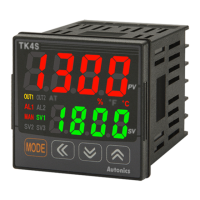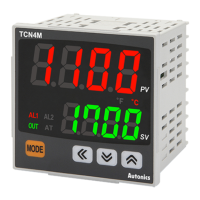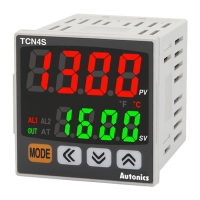What to do if the display LED is flashing on my Autonics Temperature Controller?
- JJennifer GreenJul 25, 2025
If the display LED is flashing every 0.5 seconds or an external connecting device shows an error message while using the Autonics Temperature Controller, consider these potential causes and solutions: * The external sensor might be OPEN. Cut the power to the unit and check the sensor connection. * There could be an abnormality in the input sensor connection. Disconnect the input sensor from the controller and connect the input (+) terminal to the input (-) terminal to see if the current ambient temperature is displayed. * Make sure a proper input sensor has been selected. * If HHHH or LLLL is displayed, please contact Autonics service center.








